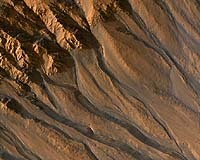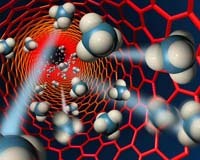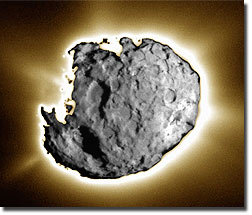Mars has an ethereal, tenuous atmosphere at less than 1 percent the surface pressure of Earth, so scientists working on The University of Arizona's High Resolution Imaging Experiment, or HiRISE, are challenged to explain the complex, wind-sculpted landforms they're now seeing in unprecedented detail.
The HiRISE camera on NASA's Mars Reconnaissance Orbiter, the most powerful camera to orbit another planet, can see 20-inch-diameter features while flying at about 7,500 mph between 155 and 196 miles above the Martian surface. HiRISE is giving researchers eye-opening new views of wind-driven Mars geology.

|
| ©Unknown
|
| "HiRISE keeps showing interesting things about terrains that I expected to be uninteresting," said HiRISE principal investigator Alfred McEwen of the UA's Lunar and Planetary Laboratory.
|



Comment: Unfortunately the worst case scenario is where we are heading and this gadget gives the psychopaths in power a way to make sure that soldiers endowed with conscience won't get in the way of their murderous rampage.
Coincidence that it is being developed by Israel?